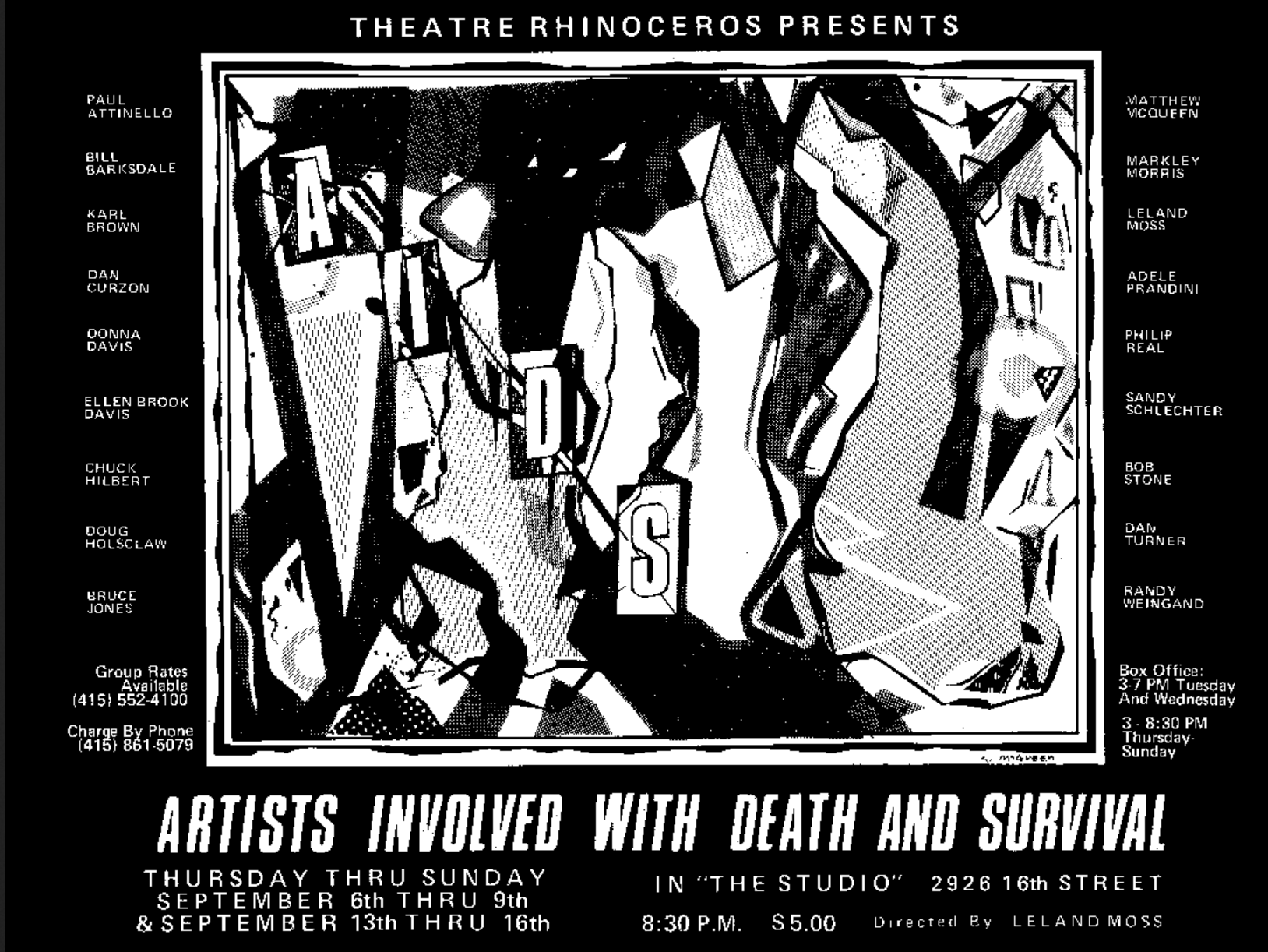
1984
PDF last updated on July 28, 2021.
Documentation for all entries can be found in the PDF.
For additional information on words in bold italic, check the Glossary.
January 1: Researchers at the University of Miami and CDC report the first case of AIDS in the wife of a man with hemophilia. Because she became ill a year before her husband began showing symptoms, the case adds more evidence that AIDS can be transmitted heterosexually by an asymptomatic person.
March 1: Two years after the conclusion of the cluster study that convinced CDC epidemiologists AIDS is sexually transmitted, the study is finally published in the American Journal of Medicine (PDF, 3.21MB). The study shows linkages between a number of the earliest AIDS cases and an “Index patient,” whom the diagram accompanying the article designates with the letter "O" (which indicates he is from "Outside of California"). Reporters mistakenly report the letter “O” as a zero, and begin writing about “Patient Zero.” They incorrectly infer—and later imply (or state outright)—that Patient Zero brought the virus to the United States. In 2016, an international team of researchers will sequence the genomes of multiple samples of HIV, the virus that causes AIDS, from as far back as the 1970s. Their work will show that HIV began circulating in the United States as early as 1970—definitively disproving the belief that any one person is responsible for the U.S. AIDS epidemic.
Image: Centers for Disease Control and Prevention
April 23 : U.S. Department of Health and Human Services Secretary Margaret Heckler announces that Dr. Robert Gallo and his colleagues at the National Cancer Institute have found the cause of AIDS , a retrovirus they have labeled HTLV-III. Heckler also announces the development of a diagnostic blood test to identify HTLV-III and expresses confidence that a vaccine against AIDS will be produced within two years.
July 13: CDC reports that the cause of AIDS appears to be a retrovirus. The report also says that the Lymphadenopathy Associated Virus (LAV) discovered by French virologist Dr. Françoise Barré-Sinoussi and the virus identified by Dr. Gallo (HTLV-III) appear to be the same virus. In addition, CDC notes: "For seropositive individuals with mild or no signs of disease, including those in whom the virus can be demonstrated, the prognosis remains uncertain. The incubation period for the life-threatening manifestations of AIDS may range from 1 year to more than 4 years."
August 15: AIDS activist Bobbi Campbell—the first person in the United States to go public with his diagnosis—dies of AIDS-related illness at age 32. A candlelight memorial service in San Francisco draws an estimated 1,000 mourners.
Bobbi Campbell’s obituary in the Bay Area Reporter
August 29 : The Public Broadcasting System (PBS) presents AIDS: Profile of an Epidemic, the first TV documentary to examine the history of the disease and talk with experts trying to find a cure, as well as with people living with AIDS and their families.
September 6 : The first play in the United States to openly address the AIDS crisis premieres at San Francisco's Theatre Rhinoceros, a performance company dedicated to producing plays by and about queer people. The AIDS Show (Artists Involved with Death and Survival) consists of a series of vignettes written by cast members, who base them on their real-life experiences. The scenes include the perspectives of nurses, mothers, friends, romantic partners, older gay men/women, straight people, and those who have lost loved ones to the disease.
The following clip, from a 1986 documentary about the play, portrays the hope that a vaccine is just over the horizon...
Poster for The AIDS Show. Designed by Matthew McQueen. Photo credit: Automatic Pilot
October 9: The New York Times reports new scientific evidence has raised the possibility that AIDS may be transmissible through saliva. It will be another two years before proof emerges that this is not the case.
October 9: San Francisco Public Health Director, Dr. Mervyn Silverman, orders 14 of the city's bathhouses, sex clubs, bookstores, and porn theaters to close because they have been found to encourage indiscriminate sexual contacts which help spread AIDS. Owners quickly defy the order, citing threats to civil liberties, and reopen.
December 26: The National Institutes of Health’s Office of Protection for Research Risks issues the first guidance for the protection of human subjects in AIDS research. This guidance applies to all federally funded research and is intended to guide Institutional Review Boards (IRBs) at federal research facilities and universities in reviewing proposals for new research studies on AIDS.
Specific Date Unknown : The Lambda Legal Defense and Education Fund, under the directorship of noted civil rights attorney Abby Rubenfeld, publishes the AIDS Legal Guide : A Professional Resource on AIDS-Related Legal Issues and Discrimination. It is the first such guide in the world.
NOTE: Links will inevitably break over time. If you find a broken link, please copy the original URL and go to the Wayback Machine, where you can plug that link into an enormous database to search for the original information. And please support the Wayback Machine! It is an invaluable resource for internet researchers and I am a regular monthly donor. ❤️
If you are still unable to find the information, please contact me through the Contact Form and I will do my best to assist you.




